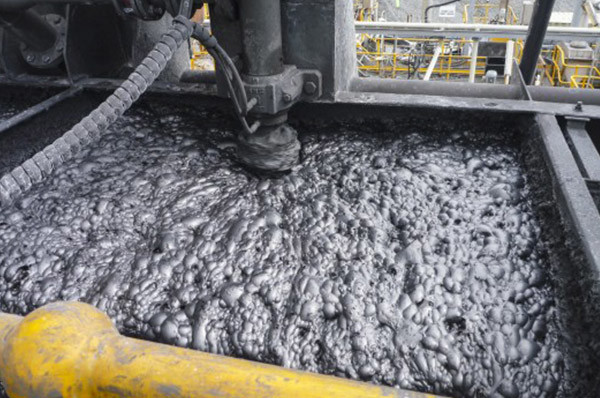 |
| Pic Credit:- EDDy pump |
As a content creator in mineral processing, I make great informative content on the equipment and process proven and reliable in the Industry. I never tried to promote any technology to my readers. However, today I found a very intriguing research paper in the area of mineral processing by Ted Nuorivaara and Rodrigo Serna-Guerrero. They come up with a new substitution in place of commercial chemical reagents in mineral processing using biodegradable reagents. Link to this research paper: https://www.sciencedirect.com/science/article/pii/S0927775720308918?dgcid=author
Before coming on the topic I want to introduce myself, my name is Sachin urade, and I am a recent Mineral processing graduate from IIT ISM Dhanbad. I work consulting author for letstalkmineralprocessing.blogspot.com. Please look at other articles too from this blog. I know giving and asking money through blogging on the internet is not fashionable in mineral processing. But new bloggers need at least money to survive. So please comment on the blog if you want to pay me for this blog.
As previously stated, the research conducted by Ted Nuorivaara and Rodrigo Serna-Guerrero is unique, but its primary lab scale. The results presented by them are very favorable for the Industry to employ green frothers in mineral flotation. All the state of the art process in flotation requires ionic polymers in some way to others, but here, in this case, the reagents are polymers and surfactant pairs. In their research paper, they mentioned that separation efficiency in over 90% with low consumption of collectors.
Researchers of this green flotation stated there case studied on Cu bearing sulfidic tailings.
The outcome of the case study as following:
- The generation of a stable, yet selective froth phase with suitable reagents
- A robust flotation performance, able to withstand changes in pH and collector concentration
- The ability to selectively float minerals with low hydrophobicity
Remember those copper-bearing tailings were taken from the output of concentrate, which gives a chance to increase hydrophobicity due to the pre-concentration process.
About reagents:
In these new studies, the authors used the most surfactant and polymer in food, oil, and pharmaceutical sectors to show the reliability and usability of chemicals in other industries. A commercially available polyethylene-glycol-ether-frother(NF240) was chosen, and as the polymeric component of the mixture, they chose hydroxypropyl methylcellulose(HPMC). The reason behind they want nonionic polymer because of two reasons:
- The mix of nonionic surfactants and uncharged polymers interact moderately, whereas the strong interaction in oppositely charged polymer-surfactant pairs results in reduced foam formation
- HPMC is a biodegradable cellulose derivative and thus offers the potential to substitute chemicals derived from non-renewable fossil sources by alternatives produced sustainably
- HPMC is a readily available molecule with a wide range of industry applications specifically designed to have foam stabilizing, water holding, and viscosity-enhancing effects on aqueous-gas interfaces. Furthermore, the polymeric species of the proposed PS-mixture, HPMC, is not expected to be significantly more expensive than current commercial formulations.
Please refer to the paper to get detailed information about the reagents.
 |
| paypal.me/uradesachin |
Key points from the paper
- The initial diffusion rate of species promotes the formation of smaller bubbles.
- PS-mixture has a high stabilization performance in two-phase foams and emulsion.
- As per the Cu-sulphuric case study, HPMC and ps-mixture produce stable froths that allow the selective separation of chalcopyrite without extra modifiers
- If was notices that the use of different dosages of each frother results in a different flotation behavior, and it can be observed from the grade-recovery curve of each system.
- NF240 performed well in a condition close to current industrial practices with separation efficiency up to 95%
- Enhanced viscous rigidity of the foams resulting in slower liquid drainage.
- A small but measurable effect of performance can be seen if the frothers used in a more alkaline system.
- Other research groups have documented the influence of pH in flotation performance using polyglycol-based frothers. It is generally acknowledged that pulp pH has a substantial impact on flotation performance. A reduction in pH has been documented to have positive and negative
- implications for froth stability,
- According to Tan et al., dealing with polypropylene glycol (PPG) systems, particles of average hydrophobicity increase the froth lifetime and decrease the drainage of the liquid film. The effect of hydrophilic particles on froth stability ranged from negligible to detrimental. A same similar behavior could also be expected with NF240, as it is polyethylene glycol.
- When HPMC was present either alone or as a mixture, a stable, mineral-rich froth was generated.
- Low degree of liberation will not be preferable for selective flotation
- It was found that the flotation rate accelerated, and the froth height also increases. A possible explanation they stated increases in the floth stabilization mechanism.
On a special note, this research is essential to do more research on the green process to improve our mother earth, so share this research with your fellow connections and make one more step towards green processing.
Comments
Post a Comment